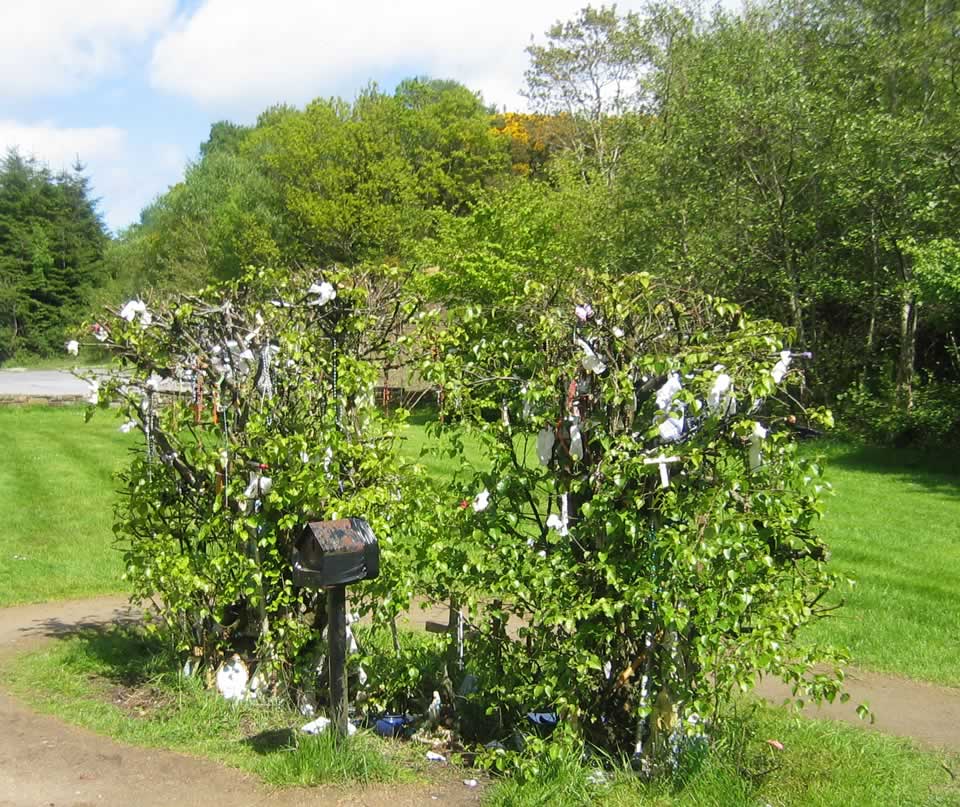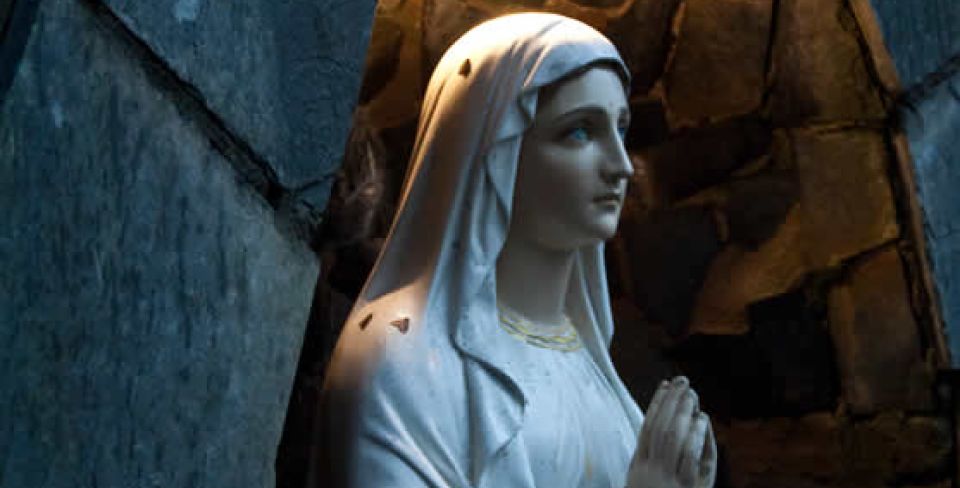3.4 Doon Fort & Holy Well
Until the 16th century, the Rock of Doon was the inauguration site of the O’Donnell chieftains. There were two ceremonies – one civil ritual here and one religious ritual which took place at Kilmacrenan. It is likely that this was the site of a fort belonging to the O’Donnells.
Manus O’Donnell was responsible for an account of Colmcille’s life which was completed in 1532. This book clearly links Colmcille to this area, although it was written nearly 1,000 years after the saint’s death.
The inauguration ceremony was supposedly attended by people with both religious and secular authority – a member of the O’Friel family who conducted the inauguration, the bishops of Derry and Ratho, and other sub-chiefs and men of the church. Ceremonies were conducted here between 1200 and 1603.
From the rock, there are good views of the surrounding moorland.

The holy well at Doon is said to have been first blessed by a Columban monk. Water from this well is linked to a number of miraculous cures.
People still visit this site to collect holy water and pray for a cure. Like many other holy sites, people saying their prayers at this well do so with bare feet.
Rosary beads, crucifixes and other tokens are left in a tree next to the well by people who are praying for a cure.
Gartan – County Donegal
- 3.1 Colmcille Heritage Centre
The Colmcille Heritage Centre sits on the shore of Gartan Lough on the edge of Glenveagh National Park. Displays in the centre tell the story of Colmcille’s early years in the Gartan area and describe the spread of early Christianity in Ireland and Scotland, giving details of monastic and religious life. There...
- 3.2 Leac na Cumhaidh
This flagstone at Lacknacoo is one of the places where Colmcille’s mother Eithne is said to have given birth to him. The other place is at nearby Churchtown. The flagstone is dotted with small ‘cupmarks’. The origins of this ancient monument aren’t known but it may date to the Bronze Age....
- 3.3 Churchtown
Churchtown - Ráth Cnó - is said to be the place where Colmcille’s family lived. According to tradition they later gave over the land so that a monastic settlement could be created here. The site is still used as a turas by pilgrims who walk barefoot between the five marked stations....
- 3.4 Doon Fort & Holy Well
Until the 16th century, the Rock of Doon was the inauguration site of the O’Donnell chieftains. There were two ceremonies - one civil ritual here and one religious ritual which took place at Kilmacrenan. It is likely that this was the site of a fort belonging to the O’Donnells. Manus O’Donnell...
- 3.5 Kilmacrenan
This is where Colmcille is said to have lived with his foster father Cruithneachán. There are two parts to the site - the left hand side is linked to Colmcille while the right side is the site of a 19th century Church of Ireland church. This site formed part of...
- 3.6 Tulach Dubhglaise
Temple Douglas was an ancient monastic site which used to stand on the old road out of Letterkenny, the main route for travellers passing through the area. Colmcille is said to have been baptised here as a Christian in 521 by his foster father Cruithneachán mac Ceallachán. It was common...










Bòrd na Gàidhlig
Great Glen House
Leachkin Road
Inverness
Scotland, IV3 8NW
(+44) 01463 225454
colmcille@gaidhlig.scot
Colmcille
Foras na Gaeilge, 2-6 Queen Street
Belfast
Northern Ireland
BT1 6ED
(+44) 028 9089 0970
colmcille@forasnagaeilge.ie
Colmcille
Foras na Gaeilge, An Chrannóg
Na Doirí Beaga
Gaoth Dobhair
Donegal, Ireland. F92 EYT3
(+353) 074 9560113
colmcille@forasnagaeilge.ie


